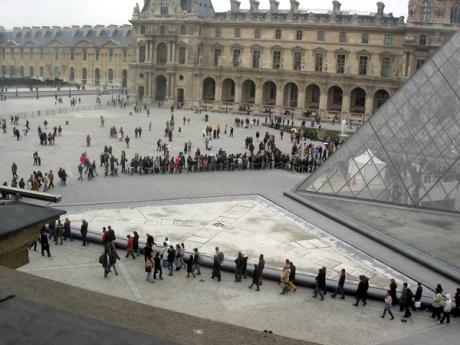I Travestiti, Cristina
1969 - Photography (Photography)
40 x 30 cm
Lisetta Carmi
On New Year’s Eve in 1965, Lisette Carmi met and photographed a group of transgender people living and working on the Via del Campo in Genoa–the main street for prostitution in the city, located in the former Jewish ghetto. This encounter was the beginning of a seven year relationship with the group, and led to the publication of I Travestiti (1972), a controversial book that comprised all of the images Carmi took of the group between 1965-1971. Forming close friendships with the people she portrayed, the artist rented an attic near Via del Campo in Genoa to live with them, she captured the everyday lives of the group, depicting sex work from a new perspective. The series I Travestiti represents a deeply sensitive meditation on gender identity which documents the portraits, moments, and environments of the Genoese trans community. In this image, titled Cristina , the last survivor of the community photographed by Carmi poses casually inside the safe space of their apartment. They are in full make-up, sheathed in a crimson dressing gown, and surrounded by the quiet opulence of their bedroom. Carmi was the first artist to photograph the LGBTQ community in Italy. At the time, Italian society was deeply Catholic and highly conservative and gender identity was (and is still now) a taboo subject. Created with profound esteem, this series was also to some extent a mode of introspection and personal discovery for Carmi, linked to the experience of being a woman in a deeply misogynistic culture. Like her other photographic investigations, this series focuses on labor in marginalized communities. However, as this portrait of Cristina demonstrates, the work is more perceivably about friendship, rather than a photo-anthropological study.
Lisetta Carmi was born into a middle-class Jewish family in Genoa, Italy. Though she originally studied music, in 1960, Carmi gave up her career as a successful concert pianist in favor of photography. With the neo-fascist and reactionary uprisings of the 1960s, Carmi began participating in leftist protest movements. Inspired by this context, she used the camera as a tool for political activism to experience and share with those who aspire recognition in the common social space. Her most important photo series’ include L’ Italsider (1962), which represents the interiors and exteriors of steel mills; Genova, il porto (1964), which articulates a post-war testimony of labor; and Erotismo e autoritarismo a Staglieno (1966), which documents a historic cemetery in the Staglieno district of Genoa. One of her most significant projects, I Travestiti , depicts a group of trans people living and working on the Via del Campo in Genoa.
Colors:
Related works sharing similar palette
» see more

© » KADIST
Leslie Shows
Human Quarry is a large work on paper by Leslie Shows made of a combination of acrylic paint and collage...

© » ARTS EQUATOR
Yangon's well loved Palace of Literature (via The Myanmar Times) | ArtsEquator Thinking and Talking about Arts and Culture in Southeast Asia Articles October 3, 2018 The four storey yellow painted building with big masonry work of books in black and white pages for its motif loomed high at the corner of Merchant Road and 37th street...

© » THEARTNEWSPER
Louvre raises ticket prices by 30% in Olympics year Art market Museums & heritage Exhibitions Books Podcasts Columns Technology Adventures with Van Gogh Search Search Museums & Heritage news Louvre raises ticket prices by 30% in Olympics year The price increase will help to subsidise free entry for some visitors and regulate crowd size Gareth Harris 12 December 2023 Share The museum's last ticket raise occurred in 2017 Photo: Inge Knoff via Flickr The Musée du Louvre in Paris is increasing its basic ticket price from €17 to €22 from 15 January as part of a plan to support free admission programmes for some visitors...
Related works found in the same semantic group
» see more

© » KADIST
David Goldblatt
1979David Goldblatt’s “Boksburg series” is a telling portrait of the small town that became a notorious symbol of racism in South Africa...

© » KADIST
Naoya Hatakeyama
Naoya Hatakeyama’s series Rikuzentakata (2011) documents the devastating aftermath of the 2011 Tohoku earthquake and tsunami in Japan...

© » KADIST
Alejandro Marré
2007Typical Weapons is a series of sculptural interventions where Alejandro Marre transforms traditional Guatemalan craft objects usually sold as souvenirs into weapons...


